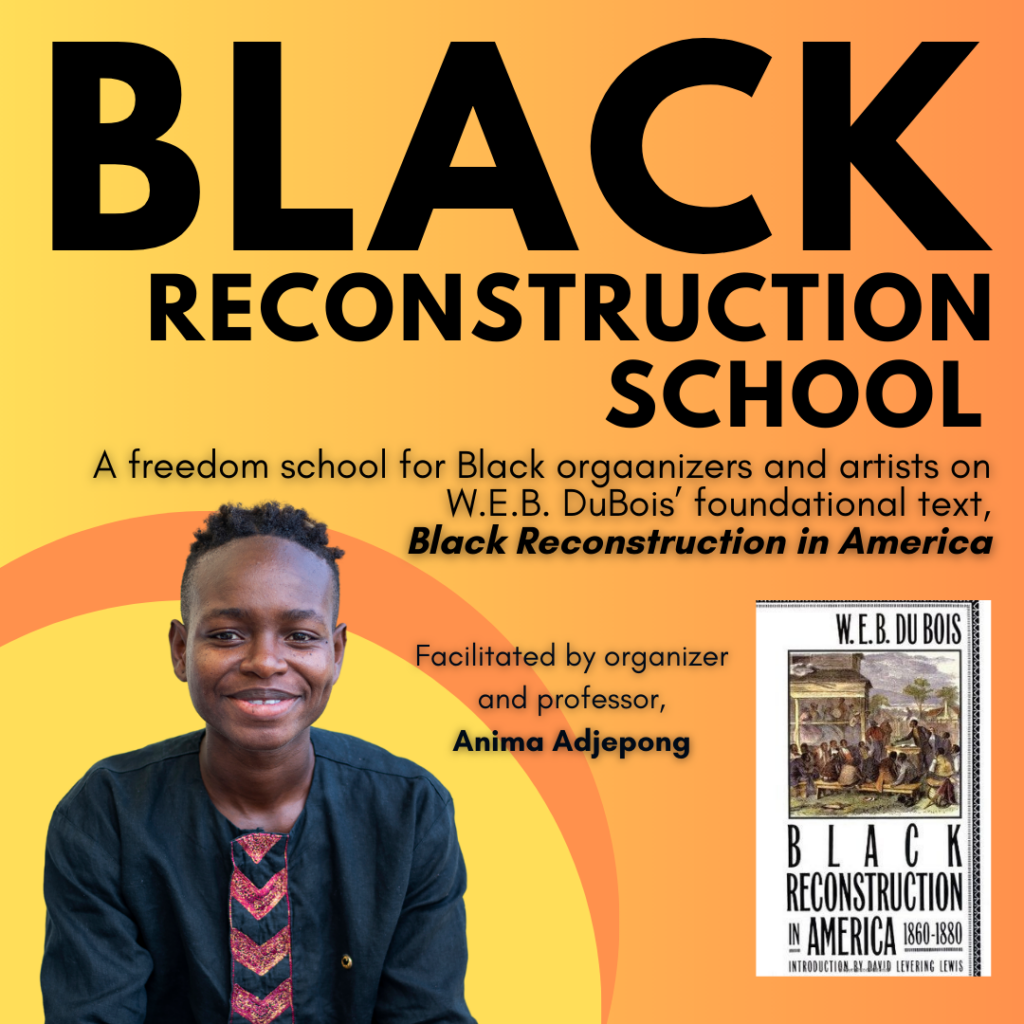
Black Reconstruction School Part I – Our Sacred Lineage
This multi-series blog post is an overview of Black Reconstruction School, a 7 week program led by Forward Together’s network organizer, Adwoa Agyepong, and facilitated by Anima Adjepong.
Thirteen community organizers and culture workers convened to read and discuss W.E.B. Du Bois’ foundational text, Black Reconstruction in America.
Together, we discussed:
- The Reconstruction Era, a time when Black people went from property to people, and connected it to the current moment, as our bodily autonomy is slowly stripped away.
- Capitalism and abolition
- Oppression and liberation
- Burning it all down and building it back up
Below, find a little bit of what we learned and discussed.
Part I
Our Sacred Lineage
“The true significance of slavery in the United States to the whole social development of America lay in the ultimate relation of slaves to democracy. What were to be the limits of democratic control in the United States? If all labor, black as well as white, became free – were given schools and the right to vote – what control could or should be set to the power and action of these laborers?” (p. 13)
In Black Reconstruction in America, W.E.B. Du Bois charts the ways that power and control shifted, before and during the Reconstruction Era. Slavery was based on domination over a Black body. The slave owners’ dominion over those bodies led to their power; social, political, and financial. And freedom, Du Bois argues, came when enslaved people took away that power.
Du Bois makes the claim that a “general strike” by enslaved Black people led to the Union Army winning the war. He states that in this way, the “slaves freed themselves”. Du Bois uses primary documents, including war reports, newspaper articles, and letters, to show enslaved Black people left their plantations and joined the Union side. They self organized in the ways they could, joined the Union armies, and offered themselves in service of their eventual freedom. After joining, they helped the Union Army navigate the unfamiliar southern terrain, they cared for the hungry and wounded soldiers, and they even took up arms. And as Du Bois proclaims, this helped turn the tide of the war. This infusion of power aided the Union Army on their path to victory.
What Du Bois teaches us is that even at their most subjugated, enslaved Black people found ways to take back their agency. At the outbreak of the U.S. Civil War, enslaved people did it by leaving plantations en masse. But we also know that they took their power back in other ways, whether by escaping their plantations, having herbal abortions, jumping off slave ships, or slave rebellions. These methods of resistance, these moments when we took back ownership of our bodies and futures, are part of our sacred lineage.
As we navigate an election year riddled with white nationalism, healthcare crises, genocide and so much more how will you take back your power?
Stay tuned for PART II, which connects Black Reconstruction and Reproductive Justice.